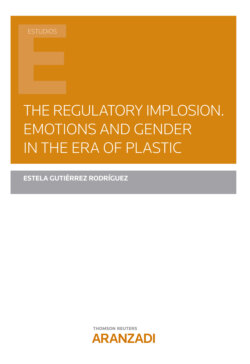Читать книгу The Regulatory Implosion. Emotions and Gender in the Era of plastic - Estela Gutiérrez Rodríguez - Страница 13
На сайте Литреса книга снята с продажи.
4 Registration, Evaluation, Authorisation and Restriction of Chemicals (REACH)
ОглавлениеIn Europe, everything related to chemical substances with the capacity to cause endocrine disruption, the year 2007 was a very important turning point for regulation. This due to the approval of Regulation (CE) No. 1907/2006 (hereinafter called REACH, acronym for Registration, Evaluation, Authorization and Restriction of chemicals substances and mixtures) entered into force on 1 june 2007.
The Regulation’s main objective is to improve human health and the environment protection against the risk that the production, commercialization and use of different chemical substances and mixtures may imply26.
According to the Regulation (CE) No. 1272/2008, the substances included in the REACH are classified as carcinogenic (category 1A or 1B), mutagenic (category 1A or 1B) or toxic for reproduction (category 1A, 1B or 2).
Entry into force of mentioned Regulation was a very important event, since as we will see, it facilitates the collection, identification and management of the regulations referring to EDC and other harmful to human and animal health chemicals, as well as it monitorsand prevents entry into the market of some of these substances27.
Initially, a total of 565 endocrine disrupting chemicals were detected and classified as carcinogenic, mutagenic, or toxic substances for reproduction with adverse effects on sexual function and fertility, as well as harmful during pregnancy with adverse effects on the fetus28.
European Parliament and Council Regulation (EC) No. 1272/2008 of December 16, 2008, about classification, labeling and packaging of substances and mixtures, and which modified the REACH, established new criteria to adapt the Community system of classification, labeling and packaging to the United Nations (Globally Harmonized System).
It does not seem possible that the risks posed by this type of substances can be ignored for the global human ecosystem, as well as for the cost in public health systems.
According to the brief regulation overview we have done, in order not to bore the reader too much, comes out that the health risks of these chemical substances have been known for decades, and was scientifically confirmed and legally accepted since before 199829. However only very lax regulations have been approved since 2004, which means decades of exposure to EDC and a tacit lack of control in global markets.
The truth is that after 15 years since the publication of this Regulation, there is still a vague knowledge of how to avoid these substances in our daily routines, or simply know where they can be found and what they are harmful for, other than the environment, flora and fauna.
Upon results of the studies that have been carried out during the years of coexistence with these substances, it is very important to increase social education regarding EDC. This book, is intended to help the reader prevent and minimize the risk of exposure.
26. European Parliament and the Council of the European Union. Regulation (EC) No. 1907/2006 of the European Parliament and of the Council of December 18, 2006 on the registration, evaluation, authorization and restriction of chemical substances and preparations (REACH), which creates the European Agency ECHA. December 18, 2006.
27. European Commission, Reach: a new chemicals policy for the EU. Environment fact sheet, Brussels, 2006.
28. Petersen Gitte, Gustavson Kim, Rasmussen Dorte, 2007, “Study on enhancing the endocrine disrupter priority list with a focus on low production volume chemicals”, Water and Environment. https://ec.europa.eu/environment/chemicals/endocrine/pdf/final_report_2007.pdf.
29. vid; Steven Vaughan, EU Chemicals Regulation: New Governance, Hybridity and REACH, Cheltenham, UK, 2015.
